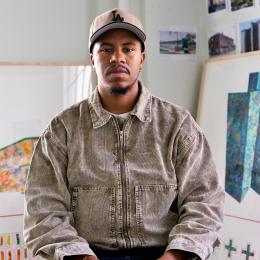The Public Artists in Development (PAiD) program’s Artist Council is an eight-member group of artists selected to provide recommendations to help shape the future of Los Angeles County's public art policy and processes.
Over the course of a 6-month long, two-part program of dialogue and art creation led by PAiD program art consultant, Dyson & Womack, the Artist Council has engaged in a series of discussions about topics such as public art contracts, creating community engagement plans, project management, and working with subcontractors. Guest presenters have included public art administrators, other established artists, and subject area experts. At the end of their tenure on the Council, the artists will craft a set of recommendations that seek to address historical barriers to participation and expand support for artists working in the field of public art.
The group was also granted individual project budgets to create temporary public artworks to engage communities about their work and further the artists’ artistic goals. The projects include the creation of sculptural installations, pop-up events, and performance-based artworks, which will be on view throughout August and September 2024. You can read more about the artists and their projects on this page.

Adee Roberson is an interdisciplinary artist whose work is a meditation on symbolism and texture. Synthesizing performance and installation, her work melds vibration and technicolor visions through paintings, video, and melodic compositions.

Dominique Moody was born in the 1950s in Germany, the sixth of nine children in an African American military family. Her first conscious memory awakened her desire to tangibly harness the power of stories; her family’s migration to the US gifted her perspective as she experienced the gravity of journeying into the unknown.

Edgar Fabián Frías is a multidisciplinary artist, psychotherapist, educator, curator, and brujx based in Los Angeles. With a passion for breaking boundaries and creating new forms of knowledge, Frías blends diverse artistic disciplines to produce thought-provoking and immersive works of art that transcend conventional categories.

Jazmín Urrea is a visual artist working in installation, photography, video, sculpture, and performance to explore symbols and totems prevalent in Latino communities.

Michelle Sui is a multidisciplinary artist, performer, choreographer, and director from Los Angeles. Their immersive multimedia works merge film, installation, dance, music, and oral history to examine the body and voice in relation to cinematic histories, language in translation, the performance of femininity, and the dislocations of memory

Noé Montes is an award-winning artist based in Los Angeles who has documented underrepresented communities for over 20 years to effect change through storytelling, education, and advocacy around social, economic, and environmental issues.

Star Montana is a photo-based artist who lives and works in Los Angeles, CA. She was born and raised in the Boyle Heights neighborhood of East Los Angeles, which is predominantly Mexican American and serves as the backdrop to much of her work.

Terrick Gutierrez is an LA-based interdisciplinary artist, creative technologist, activist, storyteller, and curator. He is the child of Belizean and Mexican immigrants. His work explores urban life in LA through the lens of the built environment, such as liquor stores and public housing projects.

